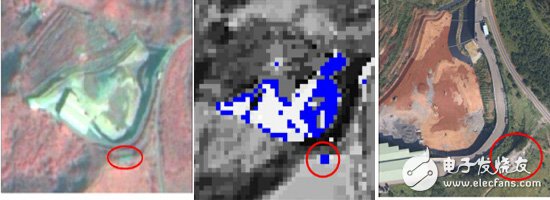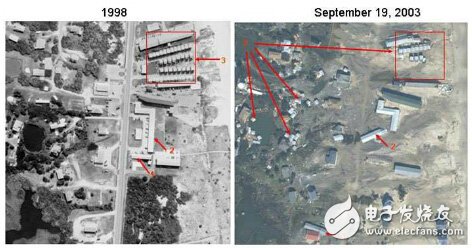Unmanned aerial vehicle remote sensing (UnmannedAerialVehicleRemoteSensing), is the use of advanced unmanned aerial vehicle technology, remote sensing sensor technology, telemetry and remote control technology, communication technology, GPS differential positioning technology and remote sensing application technology, with automation, intelligence, specialization to quickly acquire land, Resources, environment and other spatial remote sensing information, complete the application technology of remote sensing data processing, modeling and application analysis. Unmanned aerial vehicle remote sensing system has become a hot topic for research in various countries in the world due to its advantages of mobility, speed and economy. It has gradually developed from research and development to the practical application stage, and has become one of the main aviation remote sensing technologies in the future.
2. Application characteristicsUAVs are unmanned aerial vehicles that are controlled by radio remote control equipment or on-board computer program control systems. The unmanned aerial vehicle has a simple structure and low cost of use. It can not only perform tasks performed by manned aircraft, but also be suitable for tasks that are unsuitable for manned aircraft, such as geological disaster investigation in dangerous areas, air rescue command and environmental remote sensing monitoring.
According to the system composition and flight characteristics, UAVs can be divided into two categories: fixed-wing UAVs and unmanned helicopters.

Figure 1 Fixed-wing UAV
Fixed-wing UAVs take off and land and fly through the gliding of the power system and the wings. Remote control and program-controlled flights are easy to achieve. The wind resistance is also relatively strong. There are many types and can carry multiple remote sensing sensors at the same time. Takeoff methods include taxiing, catapulting, vehicle-mounted, rocket boosting, and aircraft launching; landing methods are taxiing, parachute landing, and net collision. The landing of fixed-wing UAV requires a relatively empty site, which is more suitable for mining resource monitoring, forestry and pasture monitoring, marine environment monitoring, pollution source and diffusion situation monitoring, land use monitoring, and water conservancy, electricity and other fields of application.
The technical advantage of the unmanned helicopter is that it can take off and land at a fixed point, and the requirements for the take-off and landing sites are not high. Its flight is also controlled by radio remote control or by on-board computer. However, the structure of unmanned helicopters is relatively complicated, and the control difficulty is also relatively large, so the types are limited. They are mainly used in the investigation of emergencies, such as single landslide survey, volcanic environment monitoring and other fields.

Figure 2 Unmanned helicopter
Remote sensing sensors are based on different types of remote sensing tasks, using corresponding airborne remote sensing equipment, such as high-resolution CCD digital cameras, light optical cameras, multi-spectral imagers, infrared scanners, laser scanners, magnetometers, synthetic aperture radars Wait. The remote sensing sensor used should have the characteristics of digitization, light weight, high accuracy, large storage capacity, and excellent performance.

Figure 3 Acquire multiple remote sensing images
Post-processing technology of remote sensing data
At present, most UAV remote sensing systems use small digital cameras (or scanners) as airborne remote sensing equipment. Compared with traditional aerial photographs, there are many problems such as larger image size and more images. For the characteristics of remote sensing images and cameras Calibration parameters, posture (or scan) posture data and relevant geometric models are used to geometrically and radiation correct the image, and corresponding software is developed for interactive processing. At the same time, there are automatic image recognition and rapid splicing software, which can realize the rapid inspection of image quality and flight quality and the rapid processing of data to meet the real-time and rapid technical requirements of the entire system. For further construction and analysis, use corresponding remote sensing image processing software.
3. Application examples(1) The Space Information Research Center of the Faculty of Science, National Taiwan University uses drones to take low-altitude large-scale images, cooperate with the FORMOSAT2 classification for abnormal extraction, and interpret illegal waste deposits (solid waste, etc.) in Taoyuan County for environmental pollution and law enforcement investigations.

Figure 4 FORMOSAT2 Figure 5 Classification results Figure 6 UAV image
(2) Nicolas Lewyckyj and others in the United States use UAV-RS
The technology conducts natural disaster surveys in North Carolina, and accurately assesses the losses of houses and villages through orthophoto processing and analysis. It shows the quick response capability of UAV remote sensing technology, which provides timely and accurate data for disaster management.

Figure 7 Pre-disaster pictures Figure 8 Post-disaster pictures
Cute and Small GPS Tracker for Pets
Features that already exist
âš« Tracking: It sends GPS (Location, speed) information to your application server with configurable report interval (moving or stationary).
âš« Geofence: It supports circle and polygon setting.
âš« SOS Button: Makes an SOS call or SMS message to a pre-configured phone.
âš« Mileage: Reports trip start, trip end and the mileage.
âš« 3-Axis Accelerometer: Using embedded accelerometer and carefully designed algorithm to detect the trip start/stop with accuracy.
âš« Battery Low Warning: When battery level is low, it will send low-battery alarm message.
âš« Cell-ID Based Location: Device reports cell-ID based location information if GPS signal is not available.
âš« Waterproof Case: IP65 waterproof.
âš« OTA (Over the Air): The device`s configuration, setting and firmware can be remotely upgraded.
âš« Mixed-mode: It will support 1-day-1-report mode, 1-hour check mode, power saving mode, super power saving mode, fix distance mode, fix interval mode and tracking mode to optimize the use of battery.
âš« WIFI-positioning: It will support WIFI feature for positioning.
âš« Multi-Platform: Customers can get device information through APP and web platform.
Other functions can be customized
Pets GPS Trackers,Animal GPS Tracker,Mini GPS Tracker,4G Pet GPS Trackers
eSky wireless Inc , https://www.eskygpsiot.com